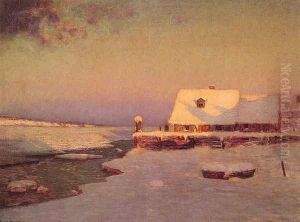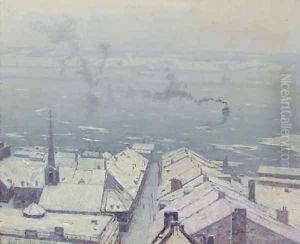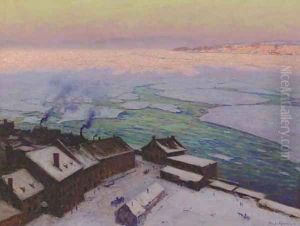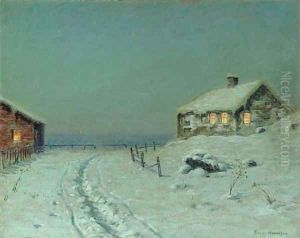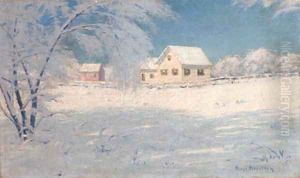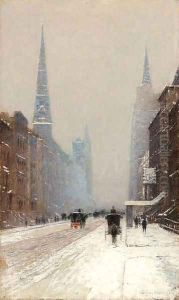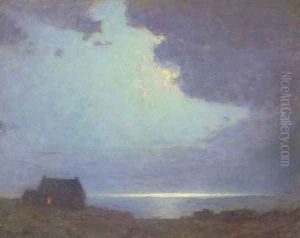Birge Harrison Paintings
Birge Harrison was an influential American landscape painter, teacher, and writer, known for his atmospheric landscapes and his role in the Tonalism movement. Born on October 28, 1854, in Philadelphia, Pennsylvania, Harrison grew up in a creative environment; his brother, T. Alexander Harrison, was also a prominent artist. Birge Harrison initially studied at the Pennsylvania Academy of the Fine Arts before continuing his education in Europe, where he was influenced by the Barbizon School in France, a movement that emphasized naturalistic and tonal qualities in landscape painting.
In Paris, Harrison honed his skills under the tutelage of Carolus-Duran and at the École des Beaux-Arts, where he was influenced by the academic training and began to develop his own style. He also spent time painting in the artists' colony at Pont-Aven in Brittany, where he absorbed the plein-air approach to capturing the subtleties of natural light and atmosphere, which would become a hallmark of his later work.
Harrison's career was temporarily interrupted by the necessity to manage the family's sugar plantations in Louisiana, which he did for several years before returning to painting full-time. He eventually settled in the art colony of Woodstock, New York, where he played a significant role as a teacher and mentor to young artists. He taught at the Art Students League's summer school in Woodstock and later became the director. Harrison wrote extensively on art and published books such as 'Landscape Painting' (1909), in which he shared his theories and techniques on art, significantly influencing the development of American landscape painting.
During his career, Harrison became known for his evocative landscapes in which he sought to capture the mood and atmosphere of a scene rather than its detailed realism. His works often featured twilight or dusk, with a focus on the effects of light and color to convey a sense of harmony and tranquility. Harrison's paintings were widely exhibited, including at the Paris Salon, the National Academy of Design, and the Pan-American Exposition in Buffalo, where he received a medal.
Birge Harrison passed away on November 6, 1929, in Woodstock, New York. His legacy is preserved through his contributions to American art, particularly the Tonalism movement, and his influence on a generation of artists as an educator and author. Harrison's works are part of many important collections and continue to be appreciated for their quiet beauty and atmospheric depth.

